
How to Use 12V DC Adapter: Examples, Pinouts, and Specs
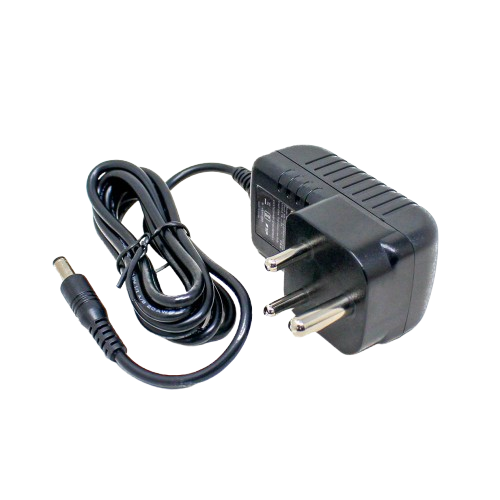
 Design with 12V DC Adapter in Cirkit Designer
Design with 12V DC Adapter in Cirkit Designer12V DC Adapter Documentation
Manufacturer: aju_paarth
Part ID: 12V DC Adapter
1. Introduction
The 12V DC Adapter by aju_paarth is a reliable power supply device designed to convert standard AC mains voltage (100-240V AC) into a stable 12V DC output. This adapter is widely used in powering a variety of electronic devices, including microcontrollers, sensors, LED strips, routers, and other low-power electronic systems.
Common Applications:
- Powering Arduino boards and other microcontrollers.
- Supplying power to LED lighting systems.
- Operating small DC motors and actuators.
- Providing power to routers, modems, and other networking equipment.
- General-purpose use in DIY electronics projects.
2. Technical Specifications
The following table outlines the key technical details of the 12V DC Adapter:
| Parameter | Specification |
|---|---|
| Input Voltage | 100-240V AC, 50/60Hz |
| Output Voltage | 12V DC ± 5% |
| Output Current | 1A (typical), 2A (maximum) |
| Power Rating | 24W (maximum) |
| Connector Type | Barrel Jack (5.5mm outer, 2.1mm inner) |
| Polarity | Center Positive |
| Efficiency | ≥ 85% |
| Operating Temperature | 0°C to 50°C |
| Storage Temperature | -20°C to 70°C |
| Dimensions | 70mm x 40mm x 30mm |
| Weight | 150g |
Pin Configuration and Description
The 12V DC Adapter uses a standard barrel jack connector. The pin configuration is as follows:
| Pin | Description |
|---|---|
| Center | Positive terminal (+12V) |
| Outer | Negative terminal (GND) |
3. Usage Instructions
Connecting the Adapter to a Circuit
Verify Voltage and Current Requirements:
Ensure the device or circuit you are powering is compatible with a 12V DC input and does not exceed the adapter's maximum current rating (2A).Polarity Check:
Confirm that the device's power input matches the adapter's polarity (center positive). Reversing polarity can damage your device.Connect the Barrel Jack:
Insert the barrel jack into the power input port of your device. Ensure a snug and secure connection.Plug into AC Mains:
Connect the adapter to a standard AC mains outlet (100-240V AC).Power On the Device:
Turn on your device and verify that it is functioning correctly.
Important Considerations:
- Avoid overloading the adapter by connecting devices that draw more than 2A.
- Do not expose the adapter to moisture or extreme temperatures.
- Use only with devices that have a compatible barrel jack size (5.5mm outer, 2.1mm inner).
- Disconnect the adapter from the mains when not in use to conserve energy and enhance safety.
4. Example Application with Arduino UNO
The 12V DC Adapter is commonly used to power an Arduino UNO via its DC barrel jack. Below is an example of how to use the adapter in an Arduino project:
Circuit Diagram:
- Connect the 12V DC Adapter to the Arduino UNO's barrel jack.
- Ensure the Arduino's onboard voltage regulator steps down the 12V to 5V for internal use.
Sample Code:
// Example: Blinking an LED using Arduino UNO powered by 12V DC Adapter
// Define the pin connected to the LED
const int ledPin = 13; // Pin 13 has a built-in LED on most Arduino boards
void setup() {
pinMode(ledPin, OUTPUT); // Set the LED pin as an output
}
void loop() {
digitalWrite(ledPin, HIGH); // Turn the LED on
delay(1000); // Wait for 1 second
digitalWrite(ledPin, LOW); // Turn the LED off
delay(1000); // Wait for 1 second
}
Note: The Arduino UNO's onboard voltage regulator ensures safe operation when powered by a 12V DC input.
5. Troubleshooting and FAQs
Common Issues and Solutions
| Issue | Possible Cause | Solution |
|---|---|---|
| Device does not power on | Loose connection or incorrect polarity | Check connections and ensure correct polarity. |
| Adapter gets excessively hot | Overloading or poor ventilation | Reduce load or improve ventilation. |
| Output voltage is unstable | Faulty adapter or fluctuating mains supply | Replace adapter or use a voltage stabilizer. |
| Device resets or malfunctions | Insufficient current supply | Ensure the device's current draw is within the adapter's limit. |
Frequently Asked Questions
Q1: Can I use this adapter to power a 5V device?
A1: No, this adapter outputs 12V DC. Using it with a 5V device without a voltage regulator may damage the device.
Q2: Is the adapter safe to use with sensitive electronics?
A2: Yes, the adapter provides a stable 12V DC output with minimal ripple, making it suitable for most electronics.
Q3: Can I use this adapter outdoors?
A3: The adapter is not waterproof. Use it only in dry, indoor environments.
Q4: What happens if I reverse the polarity?
A4: Reversing polarity can damage your device. Always verify the polarity before connecting.
6. Safety and Maintenance
Safety Tips:
- Do not open or disassemble the adapter.
- Keep the adapter away from water and flammable materials.
- Unplug the adapter during thunderstorms or when not in use.
Maintenance:
- Periodically inspect the adapter for physical damage or frayed wires.
- Clean the adapter with a dry cloth to remove dust and debris.
This documentation provides all the necessary details to safely and effectively use the 12V DC Adapter by aju_paarth. For further assistance, please contact the manufacturer or refer to the product's user manual.
Explore Projects Built with 12V DC Adapter
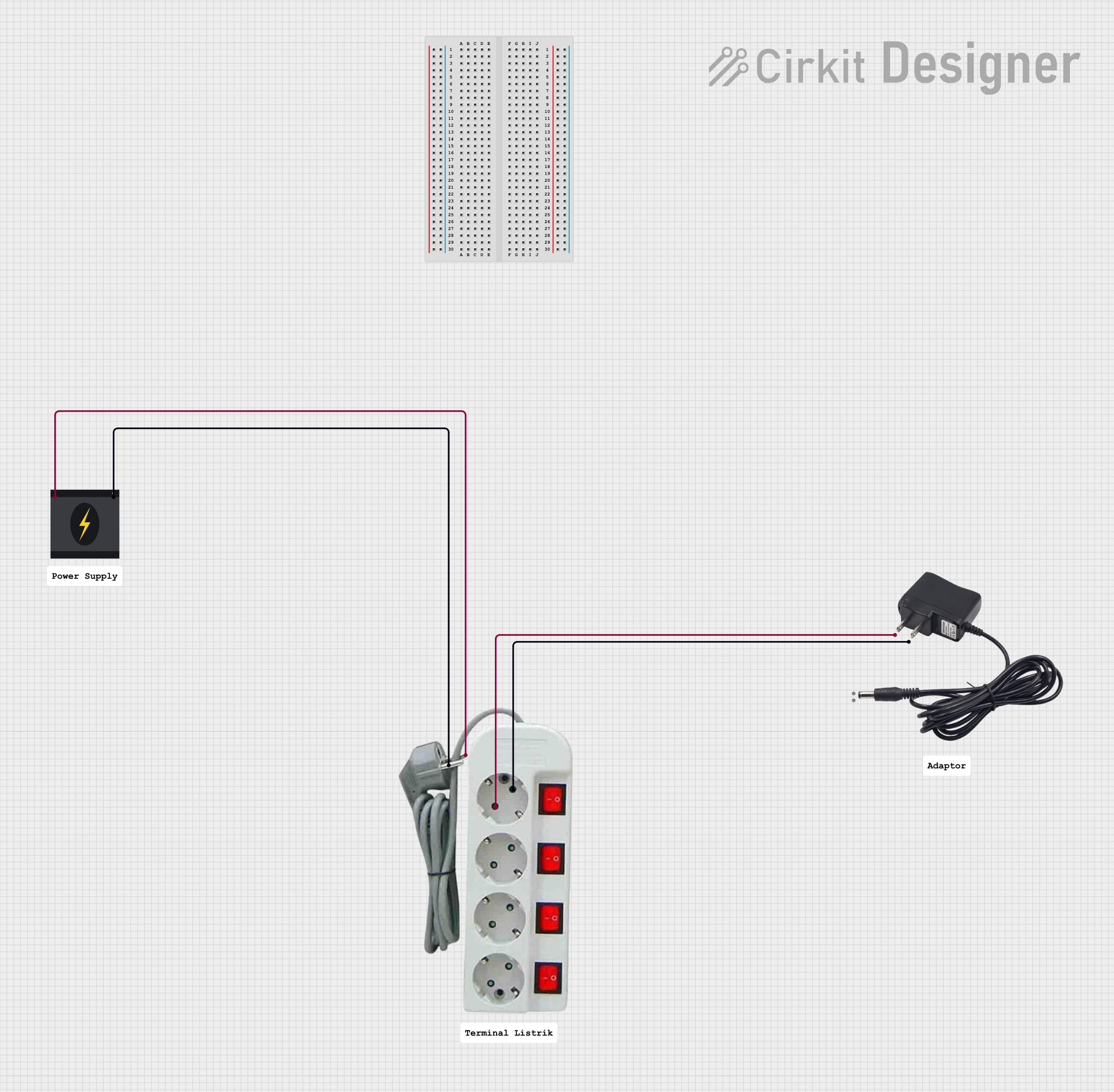
 Open Project in Cirkit Designer
Open Project in Cirkit Designer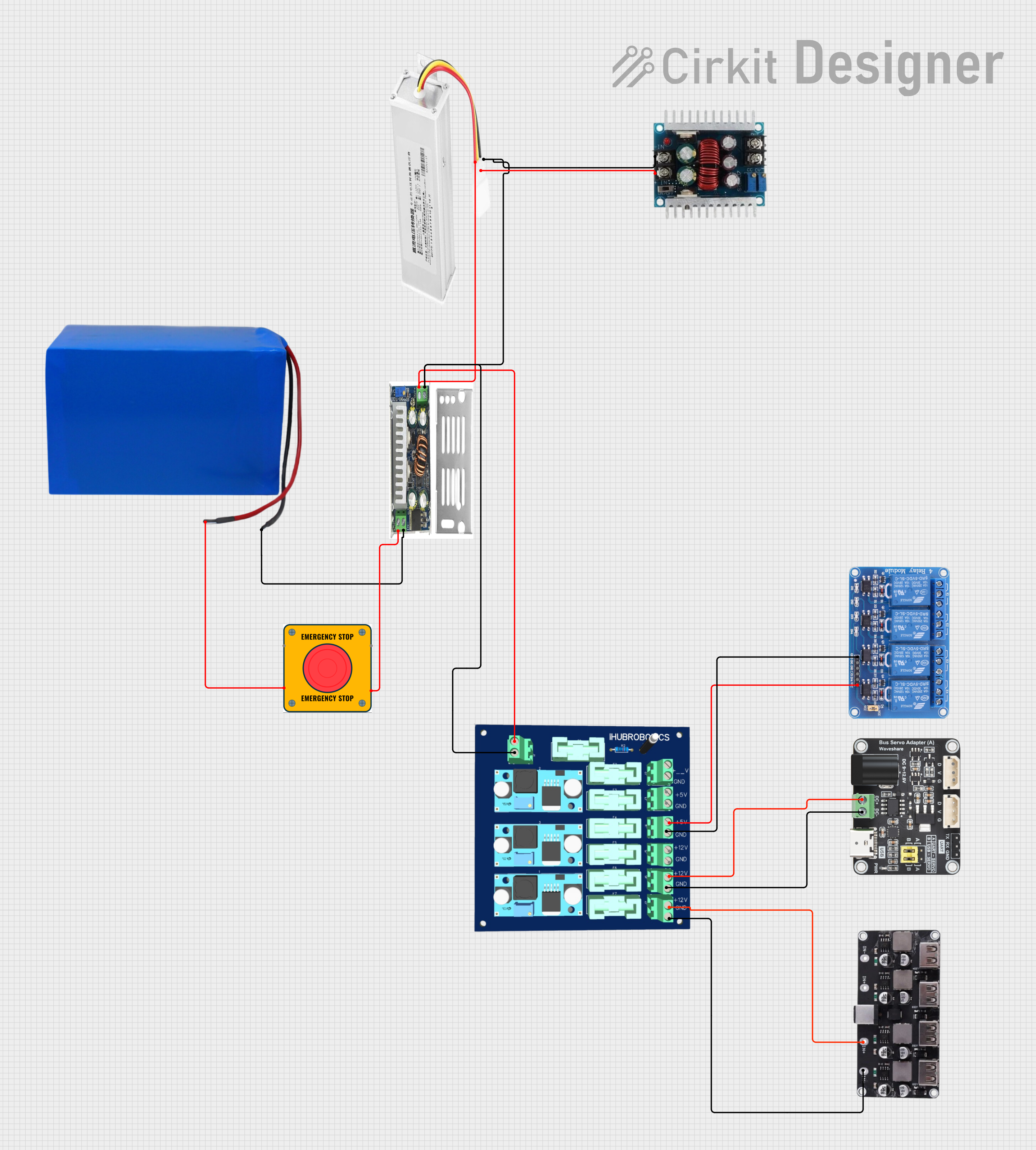
 Open Project in Cirkit Designer
Open Project in Cirkit Designer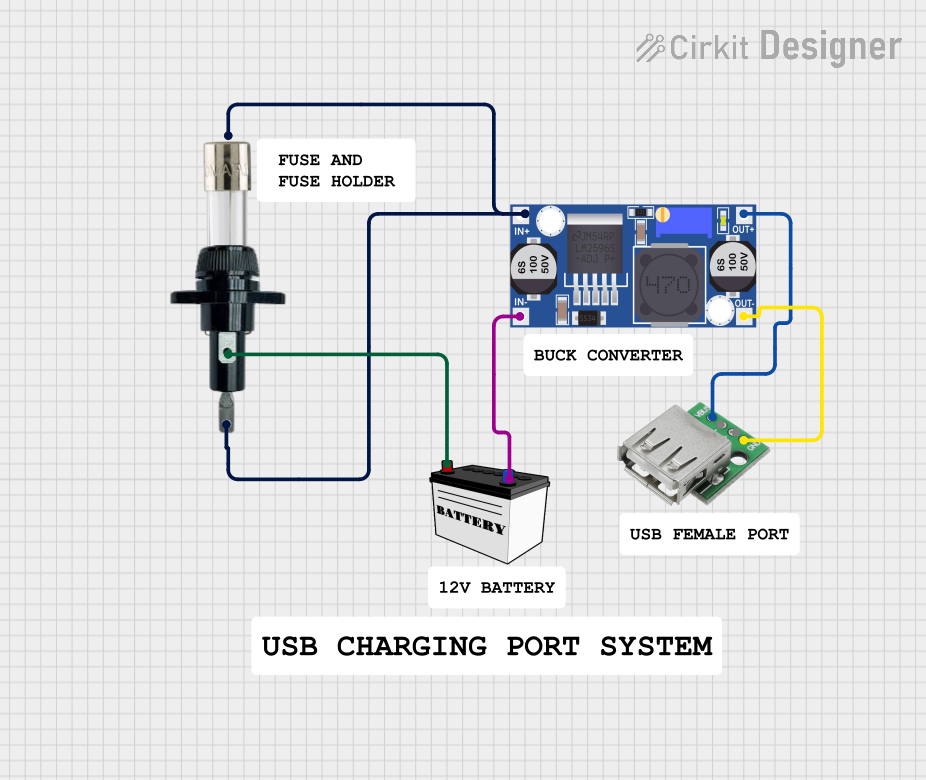
 Open Project in Cirkit Designer
Open Project in Cirkit Designer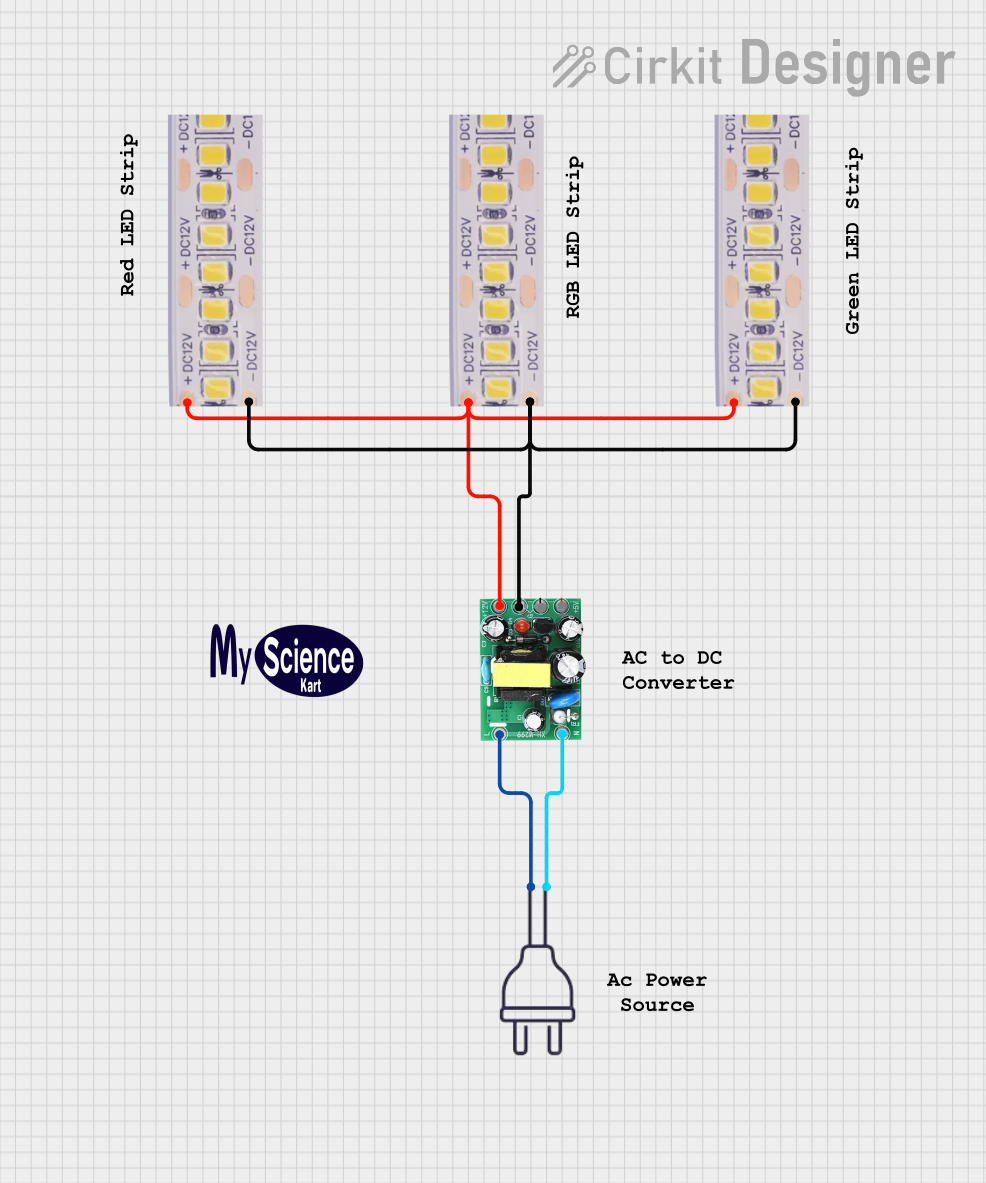
 Open Project in Cirkit Designer
Open Project in Cirkit DesignerExplore Projects Built with 12V DC Adapter

 Open Project in Cirkit Designer
Open Project in Cirkit Designer
 Open Project in Cirkit Designer
Open Project in Cirkit Designer
 Open Project in Cirkit Designer
Open Project in Cirkit Designer
 Open Project in Cirkit Designer
Open Project in Cirkit Designer